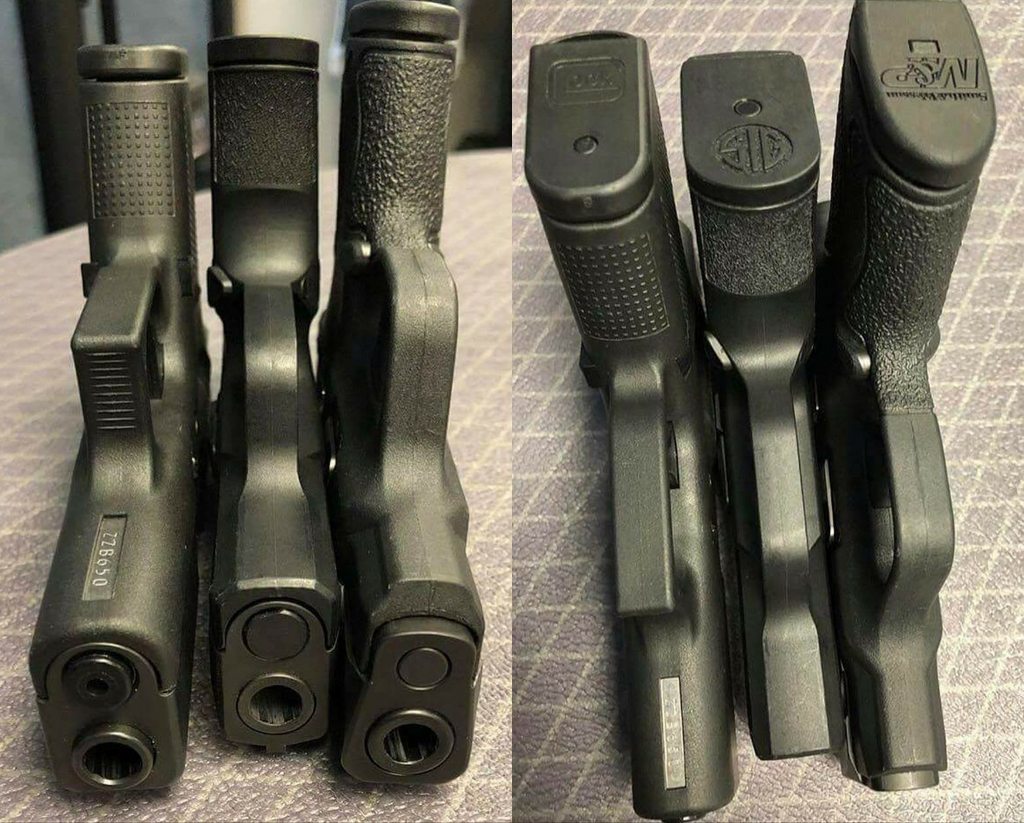Okay, this is Fishbreath’s gun, it’s true. And I’ve been pestering him to review it, but he hasn’t.
Fine. I’ll review it.
Don’t worry, Fishbreath. I’ll do my best to be impartial.
The PX4C (Compact) is a newish double action pistol from Beretta. Well, certainly newer than the Beretta 92, which is what you probably think of when I say “Beretta handgun”. The PX4C doesn’t have a ton of market share, partially because Beretta is bad at marketing, partially because Beretta hasn’t kept market share amongst law enforcement departments (see: Is Bad At Marketing), and partially because the PX4s came out a bit too late. The PX4s were released in 2004, when double-action triggers were going out of vogue. And there they have more or less stayed. If they came out in the 90s, back when double action triggers were Still Cool, they would have sold like crack, and you would hear lots about how nice they were.
Which brings us to an obvious point. These are double action semiautomatics. I am not a fan of these, personally. If you are not either for whatever reason, then (1) these will probably not make a convert out of you and (2) these can’t be turned into something that they aren’t: a striker-fired or single action only pistol. If you want something else, get something else.
On the other hand, if you are a fan of double action pistols, then the PX4C is a great choice, because it is about Glock 19 sized and polymer framed. The Glock 19 size (roughly) is big enough that you can easily get a good grip on the gun, but small enough that most people won’t have too much trouble concealing it with a modicum of effort. You can get good shooting smaller pistols, and you can conceal bigger pistols with a little more effort, but the Glock 19 is the sweet spot of balancing concealability and firepower. This gives you the same size package, the same fifteen round capacity, but a double action trigger. It’s also the only game in town if you like the double action trigger and want something in the Glock 19 form factor (and don’t feel like giving up a couple rounds). That’s really cool.
Oh, and polymer framed because it’s nicer to carry less weight around on your belt.
The PX4C has the Beretta-standard safety/decocker on the slide. I’m not a fan of this location, but it’s easier to reach with your strong hand than on a Beretta 92. You can convert it to a decocker-only lever with a really easy parts swap, and these parts are easy to come by.
I’ve also heard some occasional stories of issues if these pistols get dry, like in high round count classes. To the best of my knowledge, this hasn’t happened to Fishbreath, but he doesn’t do 2,000 round marathons of shooting. The PX4C might be a little needier of lubrication than, say, a Glock. I don’t know enough about this to know how big an issue it is. The occasional story comes up. I can’t confirm the cause either. The rotating barrel system is different, for better and for worse. It does make the pistol a bit softer shooting, but 9 mm isn’t all that stout to begin with. It might be more interesting to try one in .40, but I don’t have access to one.
The PX4C comes with interchangeable backstraps, which is nice. They could be grippier, but I say that about everything. This is easy to fix with some stippling or skateboard tape. Or maybe you like a smoother grip, in which case the PX4C is perfect for you as-is.
There’s actually a decent amount of Beretta parts support for these. There are low-profile safety/decocker levers, low profile slide releases, and a variety of sizes of mag catches. You can also use the mainspring from a Beretta 8000D to improve the double-action trigger pull by a significant amount. And, unfortunately, there is where the support stops. With searching you can find holsters. It is very difficult to find sight alternatives, though Trijicon does make both their standard three-dot tritium sights and their HDs for the PX4s. Stock sights are three-dot units.
So there you have it, readers. The PX4C is a great option for you if you like to carry reasonably-sized double action pistols. In which case, you owe it to yourself to give these a go. They’re pretty easy to overlook given all of the fancy Beretta 92 variants of late, but these are quite a bit easier to carry.
Also, if you’re on the fence, there’s an Ernest Langdon Custom Carry Edition, with actually good sights and all of the low profile controls added right out of the box. It also even comes with some grip tape. This is the version I would suggest you get, dear reader.
